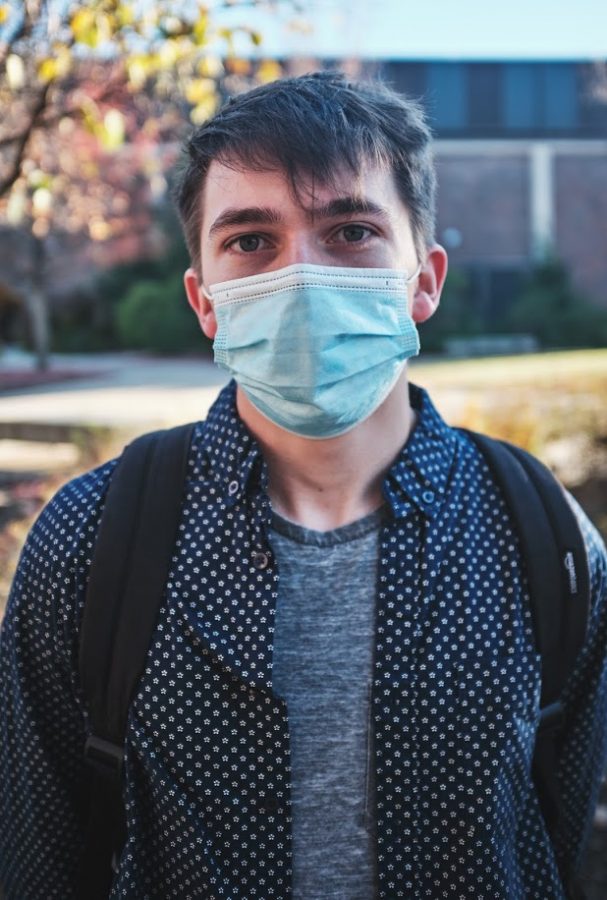Surgical face masks best for being heard clearly, UI researchers say
Junior Colin Heeneman waits in line to vote on Nov. 3. Heeneman is wearing a surgical mask, which according to a recent study, is the best type of mask to wear to be heard clearly.
February 11, 2021
A study comparing different face masks finds that surgical masks are the best for being heard clearly.
Ryan Corey, postdoctoral research fellow at the University and co-author of the study, compared medical, cloth and transparent face masks consisting of different fabrics and layers.
Using both a custom-built, head-shaped speaker and a human talker, the study measured the acoustic attenuation of 12 types of masks, which were provided by friends, community members and Carle Hospital.
According to Corey, the mask’s type of weave mattered more than the thickness of the mask in terms of being heard clearly.
Surgical disposable masks, which are made from non-woven polypropylene fibers, performed the best.
Get The Daily Illini in your inbox!
The more “exotic” fabrics such as denim were much more difficult to hear through, Corey said. Shields and masks with windows also performed worse than opaque cloth masks.
Corey found that wearing a mask does not affect speaking into lapel microphones, so talkers could wear window masks with lapels to preserve visual cues without sacrificing high-frequency sound cues.
The head-shaped speaker was used so that the experiment could be repeatable, also built in such a way that closely mimicked a human talking pattern.
“There are some variables that the artificial head doesn’t account for, like the movement of lips or sort of how well the mask fits on the face and the spatial pattern of the mouth,” Corey said.
This led Corey to also use a human talker, but a disadvantage was that the talker can’t produce the same exact sound twice.
“So, neither data set is perfect,” Corey said. “But, the good news is the results were pretty similar between the two, at least in terms of the relative performance of the masks.”
Corey was inspired to pursue this experiment after his friend who works in a school for deaf and hard of hearing children was wondering what kinds of masks to wear to best communicate with the students.
“It’s important to understand exactly how much of a barrier these masks pose to communication,” Corey said. “And the challenging thing is that this is not something that a person with hearing loss can do much about. It really matters what other people are doing.”







